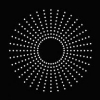Free Online Productivity Tools
i2Speak
i2Symbol
i2OCR
iTex2Img
iWeb2Print
iWeb2Shot
i2Type
iPdf2Split
iPdf2Merge
i2Bopomofo
i2Arabic
i2Style
i2Image
i2PDF
iLatex2Rtf
Sci2ools
CVPR
2001
IEEE
2001
IEEE
Precise Omnidirectional Camera Calibration
Recent omnidirectional camera designs aim a conventional camera at a mirror that expands the camera's field of view. This wide view is ideal for three-dimensional vision tasks such as motion estimation and obstacle detection, but these applications require an accurate model of the imaging process. We present a full model of the imaging process, which includes the rotation and translation between the camera and mirror, and an algorithm that determines this relative position from observations of known points in a single image. We present tests of the model and of the calibration procedure for various amounts of misalignment between the mirror and camera. These tests show that the algorithm recovers the correct relative position, and that by using the full model, accurate shape-from-motion and stereo matching are possible even if the camera and mirror are severely misaligned.
Accurate Model | Computer Vision | Conventional Camera | Correct Relative Position | CVPR 2001 | Imaging Process | Three-dimensional Vision Tasks |
| Added | 12 Oct 2009 |
| Updated | 29 Oct 2009 |
| Type | Conference |
| Year | 2001 |
| Where | CVPR |
| Authors | Dennis Strelow, Jeffrey Mishler, David Koes, Sanjiv Singh |
Comments (0)

